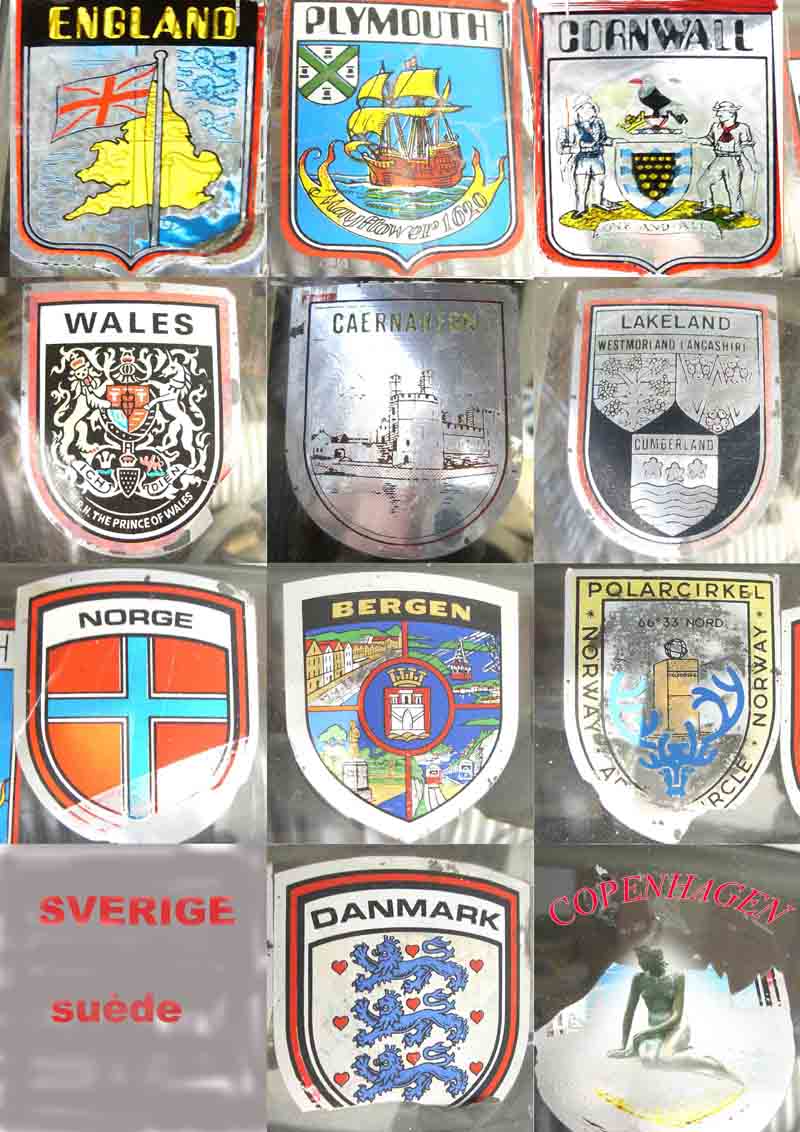english version:
version française:

Northern countries (Sweden, Denmark, Norway, and also Finland but not so much) were historical loyal Citroën customers, and fell in love with the DS when she appeared, ordering it in reasonable quantities.
The D-models were sent from Paris or Brussels, to Denmark (as an exportation platform) or directly to the receiving country. In Denmark or further north on the road, the cars were a little modified to be adapted to the legislation of the receiving country.
In official books about the DS, there is always a vague notion of "export Scandinavia", but be aware of the ancestral pride of the vikings: we should really look at the question, country by country.
Please note that i am absolutely unsure of what is written below. (Scandinavia is a bit far from my home)
I would appreciate any local help to make this page more accurate.
My email sounds: docteurdanche@orange.fr
Norway

Oslo
Oslo Motor show 1957

Here a DS with a I-8604 id, i was said it's from Eydehavn.
Oslo's streets.


The importation to Norway was centralised at the Oslo site "Citroën for norsk terreng", presented here (in French only): link.

In this country, on the first DS models, there is an additional gauge for the water temperature. Here are 2 pictures from 1956 cars; alas i don't have any good close up.
But on this link you get a presentation of a Norvegian 1956 DS.

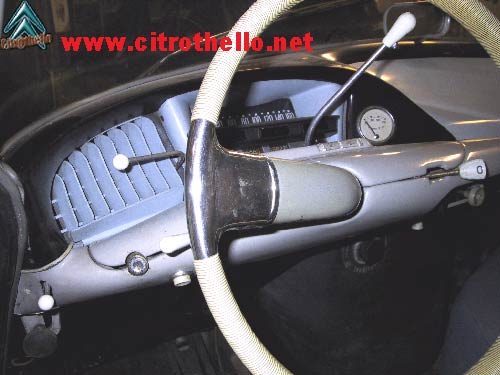
[This is quite unsure becaused it's based on my observations on only one model, below, and i feel that the inscription is not in the right place on the bonnet]

- starting on the 1st of January 1971, a new norvegian legislation asks for a sideblinker. The shape of the norvegian sideblinker (made by SEIMA) is the same as the Italian ones (last generation).
Early models of this norvegian sideblinker have the property to lose their original orange colour in their center, and they appear white.




At last, there is something really odd about Norway. You'll find there today many 75 models (many more - in proportion- than in France). .
And most of these cars are with black targa and the colour of the car is... Rouge Cornaline AC419, a colour that had disappeared from the tables since 1969.
This was due to an initiative of the predecessor of M Martinot, head of Citroen Norge. When Citroën announced the end of the DS, he ordered in France a bulk of DS, anticipating the orders from his customers. They were all red, it was his choice, because the insurance is lower in Norge for red cars, because you see them better in the snow!
Here pictures of one of the very last DSpecial, AC419.


Denmark

- on the first DS, the additional Motometer water temperature gauge added by Citroën Denmark is smaller than the one hat was added in Norway. Due to danish authorities compliance, Citroën Denmark added also two red lights repeating the blinker (to tell if it's activated to the right or to the left). Here a picture on a 56 DS (#5331), which belongs to Gert Bue Larsen in Denmark.


- the danish legislation in 56 asks for a sideblinker. On the first french DS, there is a native sideblinker (between the two doors), but not on the ID (the light between the doors, that looks like being exactly the same as on the DS, is in fact used only as a stationary light).
Therefore the first IDs in Denmark have such kind of "Ermax" sideblinker (that was used on many many cars in Denmark).


Here two old pictures when these IDs were new.

Early DS's also had a modification on this point.
There is a danish rule that the side light must be clearly visible also in bright sunlight: the ERMAX device allows 5 Watt bulbs instead of the french 1,5W standard ones. Also the colour of the device was to be orange.
Therefore Citroen Denmark removed in 1957 the original French B pillar lights, and pu these ERMAX showed below.
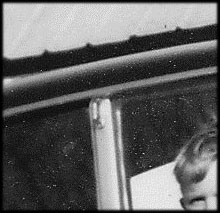




There is also the story of 34 Id estate made specially for Denmark, that is told in french here: ce lien

I would appreciate more information about later Danish cars.
One more thing i know is that there was no DS20 ever sold new in Denmark.
At last, let me tell you i made this page about Citroen garages in Denmark.
Seen on Facebook : a danish commercial document from 1969
You can also get a complete presentation of:
a 1956 DS export Denmark
a 1957 DS export Denmark
And this picture of Fritz Andresen garage might have been taken near Copenhagen.

Sweden

Do you know Gärdet?
It's a district of Stockholm.

The DS made its appearance in Sweden very early: the first cars were presented to the press in January 1956. The oldest survivor in Sweden bears chassis number 2308, several thousand numbers therefore before the Danish or Norwegian cars that we know.

According to Mr. Thelin's research, in this period photo taken in Uppsala (North of Stockholm), they are numbers 632 (Champagne), and 2366 (Green Spring).


Contribution by Lars N. :
Early models in Sweden did not differ much from the French ones: there was only a supplementary water temperature gauge, of a different type from the danish or norvegian ones: the swedish one has a black colour, and does not present the danish lights for blinkers.

I would think it was the same for IDs in Norway and Denmark, but i have no picture.

Also on the Black and White picture, we see clearly the Swedish "half way" curved exhaust pipes and the bigger rear mud guards, that were mandatory in Sweden, behind the front and rear wheels.


On the DS and ID, these rear reflectors were bigger than original only until 1967, after that the original type was approved.



The front number plate holder was painted in white on first models in Sweden.

Josephine Baker in Sweden: black singer, white plate holder.

and here the DS from Dag, which shows that the plate holder was also painted in white on second nose DS.

You might get a complete presentation of three 50's swedish cars:
Arrival of the DS in Sweden, 1956.
Interview of swedish DS owners in 1957.
a ID 1962 with swedish Dymo
Importation registers is Sweden
A stunning swedish taxi
Citroën taxis in Kiruna (far North), in 1957
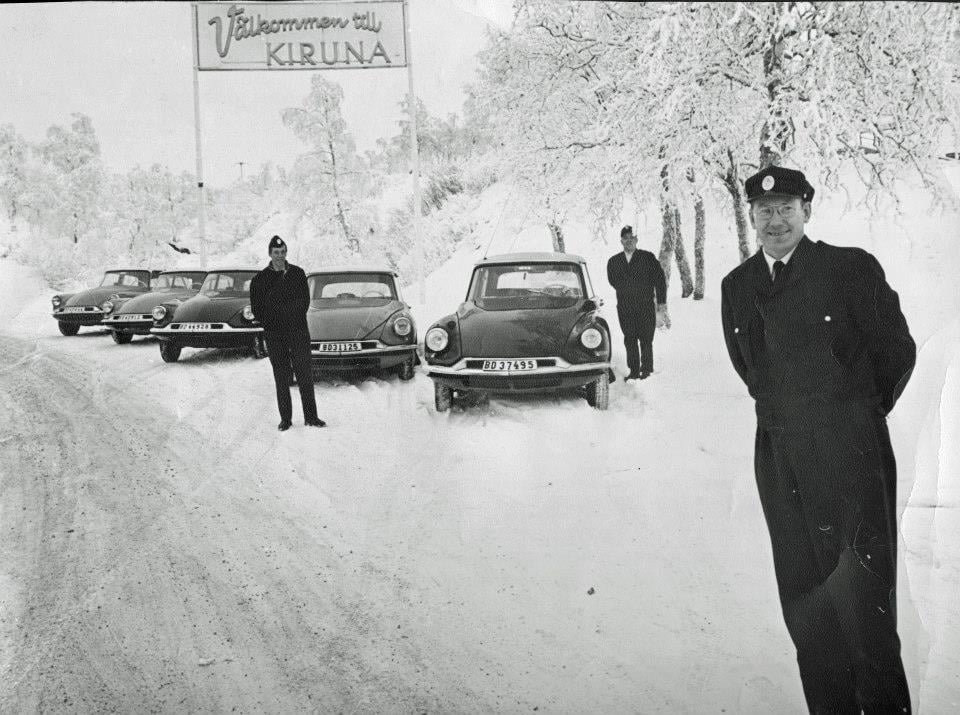
Starting at year model 60, the DS for Sweden have "Vattenfall" seatbelts.
(see the complete story told in Franch here: les ceintures de sécurité.)
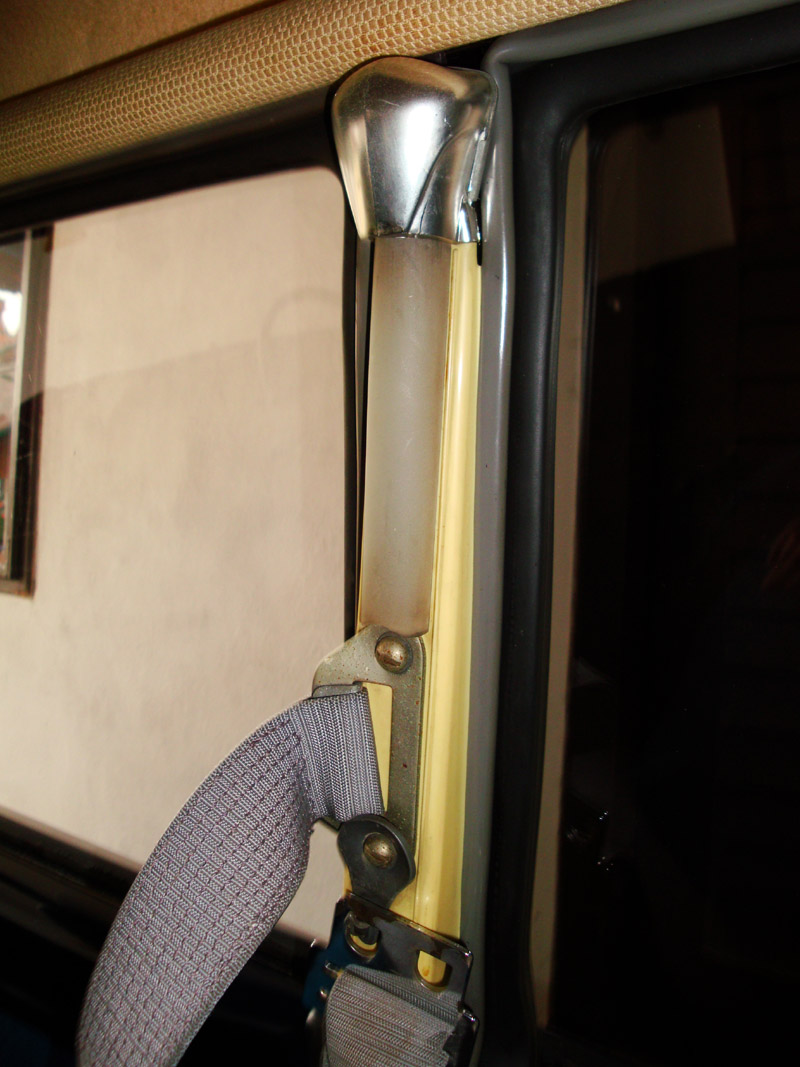

It's current that these belts are red

After a few years of production, the technical specification for Sweden reads:
- Chassis of Grand Exportation-type with reinforcements from early sixties
- Tyres 165-400 both in front and rear, later 180-15 XAS both in front and rear on all models until IE
- Exhaust system of Grand Exportation type ending under rear bumper
- ID had always rear window in glass, not plexi
- DSpecial had stainless steel indicator trumpets
- Rilsan-coated hydraulic pipes from 1970
- Special spheres with special membranes for cold climates
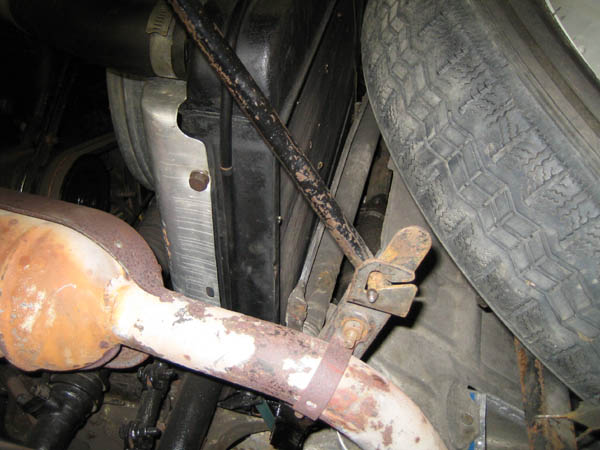
This global technical specification (sent to me for Sweden by Lars) should probably have many common points with the technical specification fot other cold countries.
About the lights: there were no sideblinkers ever in Sweden.
But there were at some point some yellow plastic position lights below the front bumper: when the "law of driving lights even at days" came in Sweden, lots of people mounted these lights instead of having the headlights on. They were automatically turned on and off with the engine, and therefore the driver never risked to forget the lights on and emptying the battery.
These were quite popular in the period ca 1977-1985 but since then almost gone.

In the early seventies, the Swedish carmaker SAAB introduced on their models 99 and 96, for the first time in the world, some front light wipers. Volvo soon followed and when both Swedish carmakers had these wipers, the Swedish lawmakers decided that all new cars sold in Sweden should have front light wipers. So they were fitted on Swedish sold DS and even GS (2 CV got a dispensation, as it would indeed be very difficult to fit such wipers on a 2CV....)
[The requirement was abandoned in 1995 when Sweden joined the European Union. As soon as the requirement was gone, many owners removed the wipers from the headlights because they almost never worked anyway]
Therefore, for 74 and 75 models, and only for Sweden (not Denmark or Norway), the D-models had originally these additional wipers.

Here a picture of the dash command
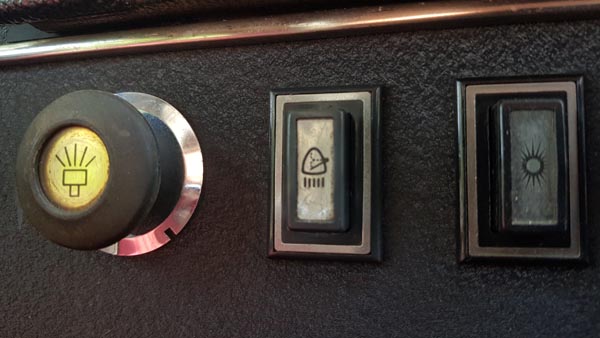
Other specificity: headrests were standard for Sweden, and not an option.
Also mandatory mudflaps (untill 1983)

Also retractable seat belts both front(mandatory from 1974) and rear(mandatory from 1975)!
And a strange thing appears, the same as in Norway: the CX was not yet sold in Sweden in 75, and many 75 D-models were sent there, and a large proportion of them (Dspecial, DSuper, breaks and even Pallas) were in a Rouge Cornaline colour.
You will find on this link a presentation of such a 75 Rouge Cornaline Pallas, property of Lars.

This is recently updated data (2020) from the Swedish Transportation Board Car Registration Register for surviving Deesses in Rouge Cornaline in Sweden:
1974
1 DS20 Break
4 DSuper 5
8 DSpecial/DSuper
1975
1 DS20 Break
1 DS23 Break
2 DSuper 5
30 DSpecial/DSuper
2 DS23 Pallas
1 DS23IE Pallas
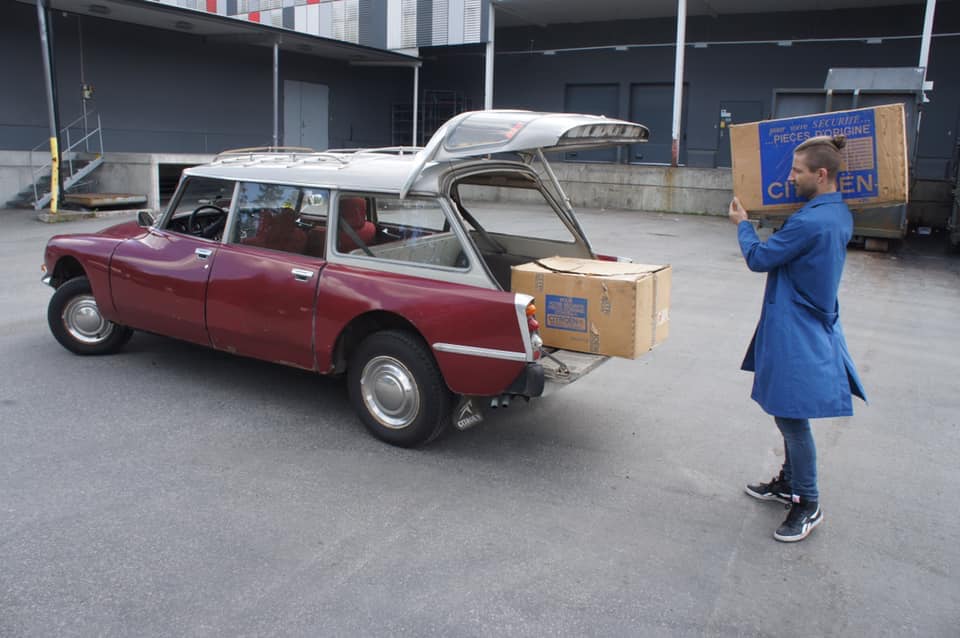
Finland

- the cars came to Finland directly from Paris, without going through Denmark. There are very very few early models that survive here, this is significantly different from the situation in Norway or Sweden.
In the time , the Finnish D-models models were so equipped:
- add of a water temperature gauge
- no "Citroën" logo on the bonnet
- no sideblinkers
- bigger rear mudguards (like in Sweden)
- option of special heater/defrost on the rear window
Here as a present, you get a picture of the very first DS to arrive in Finland, on the 29th of May, 1956. The colour was Vert Printemps, and the chassis number 1643.
More pictures about the DS in Finland on this link

The arctic circle trip
Let's finish with a small story about the Ds in Scandinavia. Please meet this camping car and her badges on the front window.


Think to this: how many D models have she met in scandinavia during the trip? Hundreds, maybe?
Ok, enough for today, my boys, it's time to sleep, make sweet dreams.
Here below you'll find the badges on the front window to remember that incredible trip.
Dr Danche.
